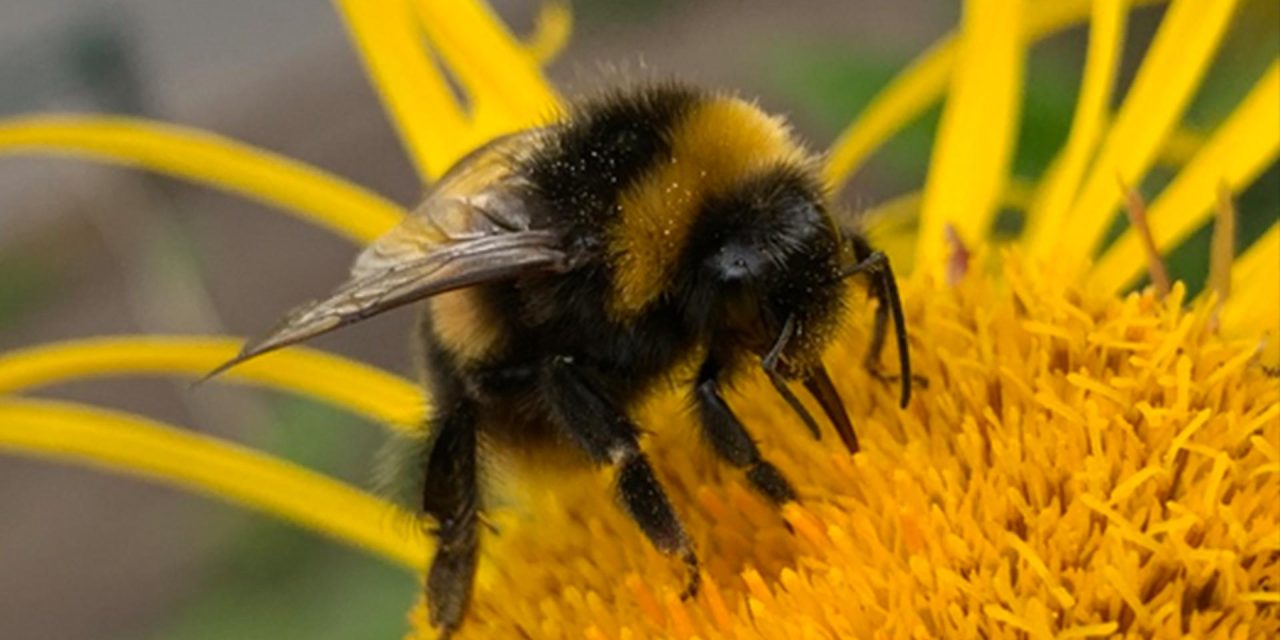
Changing temperatures increase pesticide risk to bees

Temperature influences how badly pesticides affect bees’ behaviour, suggesting uncertain risk impacts under climate change
The findings indicate that future extreme temperature events under climate change could increase the impact of pesticides on bee populations and their pollination services.
Certain pesticides, particularly a class called neonicotinoids, are known to impact bees and other important insects and are thought to be contributing to population declines. However, bees’ reported responses to this threat across the world often seem to vary, suggesting other interacting factors are at play.
Now, researchers from Imperial College London have shown that environmental temperature can influence the degree to which pesticides can alter a suite of bumblebee behaviours important for their survival and ability to pollinate crops.
The team studied six bumblebee behaviours under the influence of two pesticides (the neonicotinoid imidacloprid and the sulfoximine sulfoxaflor) at three temperatures (21, 27 and 30°C).
Four of the behaviours – responsiveness, likelihood of movement, walking rate, and food consumption rate – were affected by imidacloprid more strongly at the lower temperature. This suggests cold snaps could increase pesticide toxicity on behaviours important for nest duties.
However, a key behaviour – how far the bees could fly – was most strongly affected by imidacloprid at the highest temperature. This relationship showed a strong drop-off, with flight distance measuring the same between 21 and 27°C, before falling sharply when reaching 30°C.
See also: Insecticide affects target species but not bees
Pesticide risk dynamics
Lead researcher Dr Richard Gill, from the Department of Life Sciences (Silwood Park) at Imperial, said: “The drop-off in flight performance at the highest temperature suggests a ‘tipping point’ has been reached in the bees’ ability to tolerate the combined temperature and pesticide exposure.
“This seeming cliff-edge effect happens over the span of just three degrees, which changes our perception of pesticide risk dynamics given such temperature changes can commonly occur over the space of a day.”
He added: “Furthermore, the frequency to which bees will be exposed to pesticides and extreme temperatures under climate change are predicted to increase.
“Our work can help to inform the right concentrations and application times of pesticides across different climatic regions of the world to help safeguard pollinators, such as bees.”
Temperate latitudes
Flight distance is key for pollination, as it underpins foraging potential and contributes to food security through crop pollination.
Although the tropics are hotter in general, it is possible that insect pollinator populations in the more temperate latitudes, including the UK, feel pesticide effects more strongly, as the temperature ranges are larger.
Bees are responsible for pollinating many important cereal crops as well as legumes and fruit trees. As we diversify our food supply, demand for their pollination services will increase – but so may the stresses bees face, from climate change and increased insecticide use.
This work quantifying the relationships between temperature and pesticide impact should help towards modelling the risks of pesticides across different regions of the world as the climate shifts, say the researchers.
First author Daniel Kenna, from the Department of Life Sciences (Silwood Park) at Imperial, said: “Our findings show that environmental context is crucial when assessing pesticide toxicity, particularly when projecting bee responses under future climate change.”
Co-author Dr Peter Graystock, from the Department of Life Sciences (Silwood Park) at Imperial, said: “These results are important for developing a toxicity forecast framework, allowing us to predict how bee populations will respond to climate change whilst living in intense agricultural landscapes.”
The team next want to do more comprehensive studies across the temperature gradient to determine how toxicity affects scale with temperature, and precisely where tipping points may lie across a range of species.
The study is published in Global Change Biology.
Image © Daniel Kenna/ Imperial College London.















